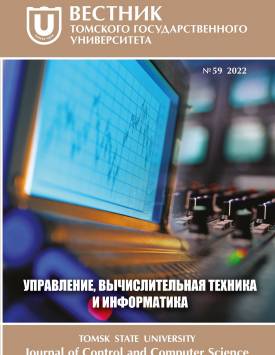Network connectivity probability analysis based on its states inversion
The paper shows that since for large and complex telecommunications networks the calculation of the connectivity probability turns out to be a very cumbersome and time-consuming process due to the huge number of elements in the resulting expression, the most appropriate way out of this situation is an approach based on the representation of the network connectivity event in the form of sums of products of incompatible events, which represent a form of transition to substitution, allowing a direct transition to a probability function by replacing logical variables (sets) with probabilities, and logical operations (operations on sets) by corresponding arithmetic operations. This representation leads to a fairly compact form of writing the resulting connectivity equation and, as a result, to a decrease in computational complexity and a decrease in the resulting rounding error. It is indicated that this approach is recommended by the domestic GOST for calculating the stability of the functioning of networks and in the scientific literature has been called the method of combining taking into account the absorption effect. It is explained that there are several interpretations of the concept of connectivity, a generalization of which is multi-pole connectivity, including both two-pole and all-pole. In this case, it is advisable to consider the connectivity event as the existence of a certain subgraph in a specific implementation of the graph containing the given vertices, the original random graph and uniquely being a tree whose leaves can only be these specified vertices. For the general case of a multi-pole network, these subgraphs are trees that have a given set of vertices, for a two-pole network -trees containing a given pair of vertices, in fact, they are paths, for an all-pole network-spanning trees that include all the vertices of a random graph. The paper presents a variant of eliminating the main drawback of the most advanced modifications of the method using multi-variable inversion - the need for a comparative analysis of each term with all previously considered for the uniqueness of the contained edges, as well as in some cases additional operations on sets. According to this variant, it is advisable to consider not the union of connectivity events (incoherence), which degenerates into the sum of incompatible events, but the intersection of opposite events, which also leads to a similar sum, but to obtain which there is no need to perform a multi-variable inversion for each of the terms over all previously analyzed ones. The procedures for bringing two incoherent events to the union of independent events, as well as three incoherent events to the union of independent events, which will allow us to obtain a recurrent method for calculating the probability of connectivity in the future, are described. Contribution of the authors: the authors contributed equally to this article. The authors declare no conflicts of interests.
Keywords
communication network, graph, connectivity probability, multi-variable inversionAuthors
| Name | Organization | |
| Batenkov Aleksandr A. | Orel State University | batenkovl957@mail.ru |
| Batenkov Kirill A. | Academy of Federal Guard Service | pustur@yandex.ru |
| Fokin Aleksandr B. | Academy of Federal Guard Service | tatarin57ru@mail.ru |
References

Network connectivity probability analysis based on its states inversion | Vestnik Tomskogo gosudarstvennogo universiteta. Upravlenie, vychislitelnaja tehnika i informatika – Tomsk State University Journal of Control and Computer Science. 2022. № 59. DOI: 10.17223/19988605/59/10
